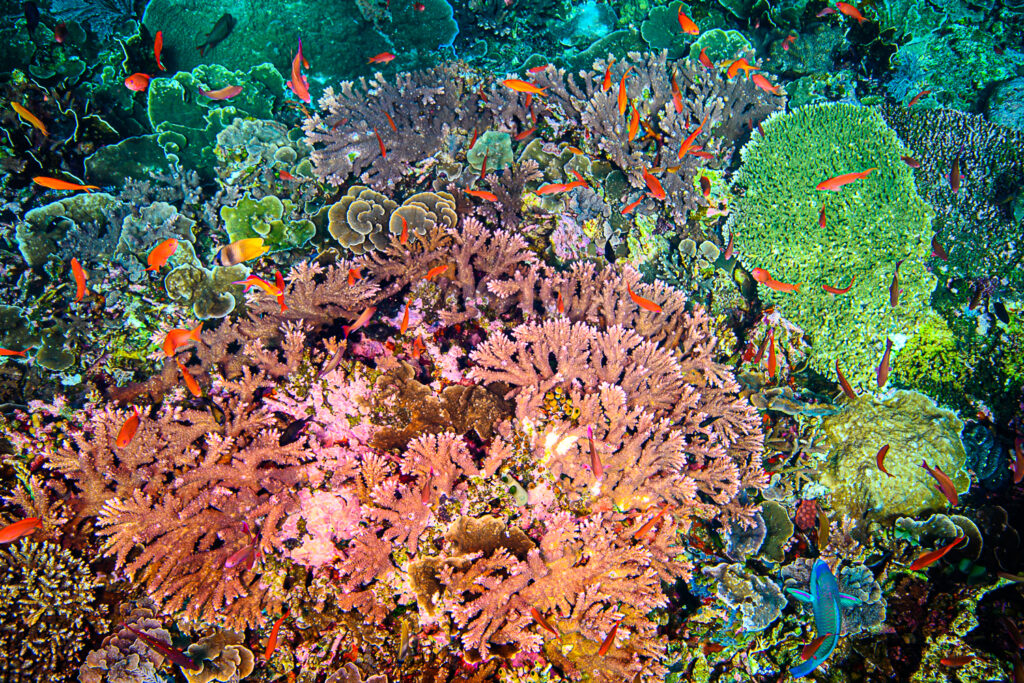
Acropora sukarnoi, is a classic Indo coral, we can admire it in many of the high current reefs around Indonesia. Its name is dedicated to the first Indonesian president and actor of Indonesian independence: Sukarno. It’s a fairly new species, only described in 1997 by Wallace.
Not the most colorful Acro:
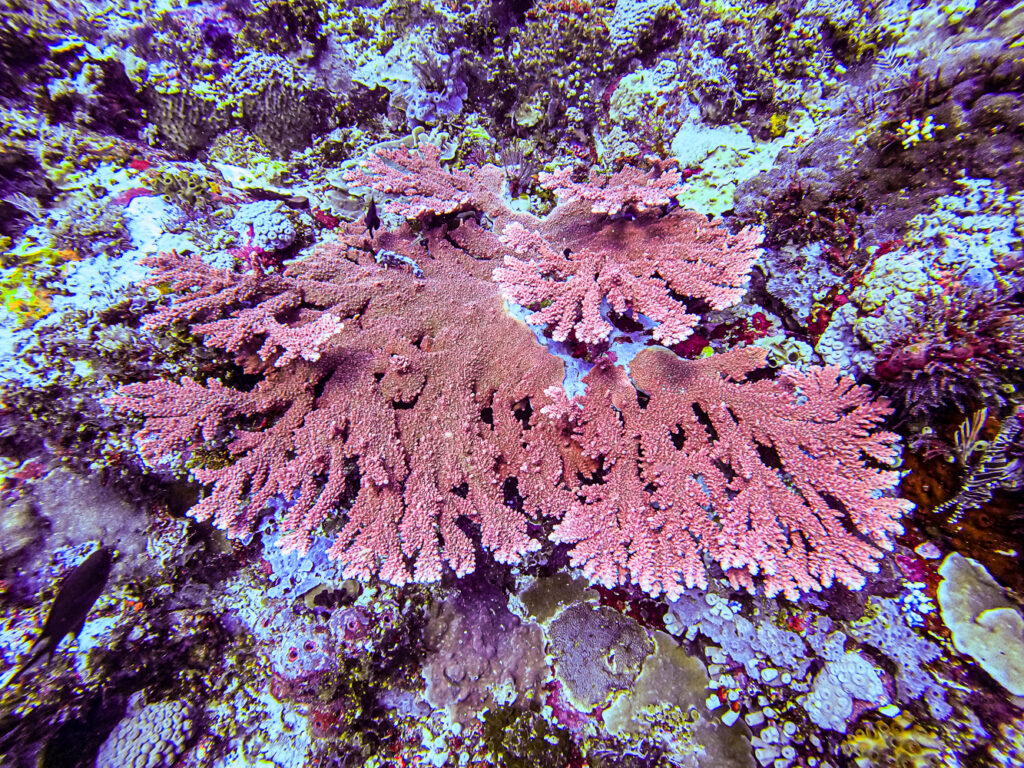
This particular coral never really entered the hobby, as its coloration is not multicolor, rainbow, grafted, gold… or anything else that looks good under blue LED. Nevertheless, some colonies have a really nice subtle orange coloration, and some others have a red hue that could probably intensify under blue LED if given the right maintenance conditions. The potential of A. sukarnoi, especially for large tanks, is quite interesting.
A Unique Colony Shape:
Colonies are determinate tables, primarily composed of highly fused horizontal branches. These may form tables over 3 meters (9.8 feet) across, or plates with a side attachment. Central parts of colonies may be almost solid. Most colonies, especially peripheral parts, are open-branched.
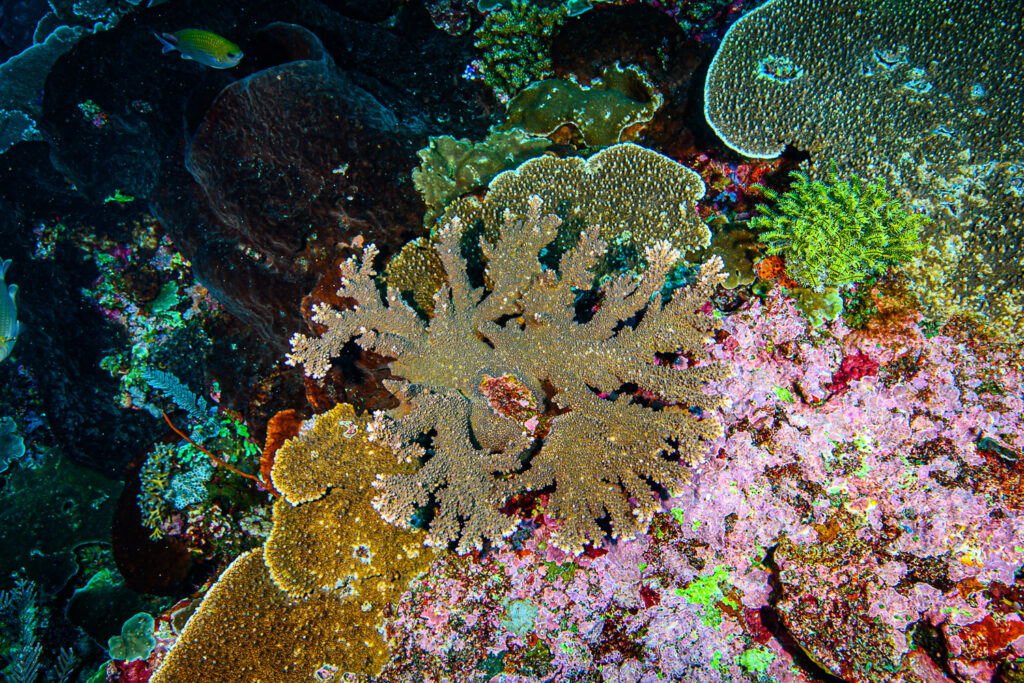
Some branches end up with multiple horizontal axial corallites. Horizontal branches are not a classic Acropora colony shape. It’s very characteristic, and only a few species like A. florida can have it.
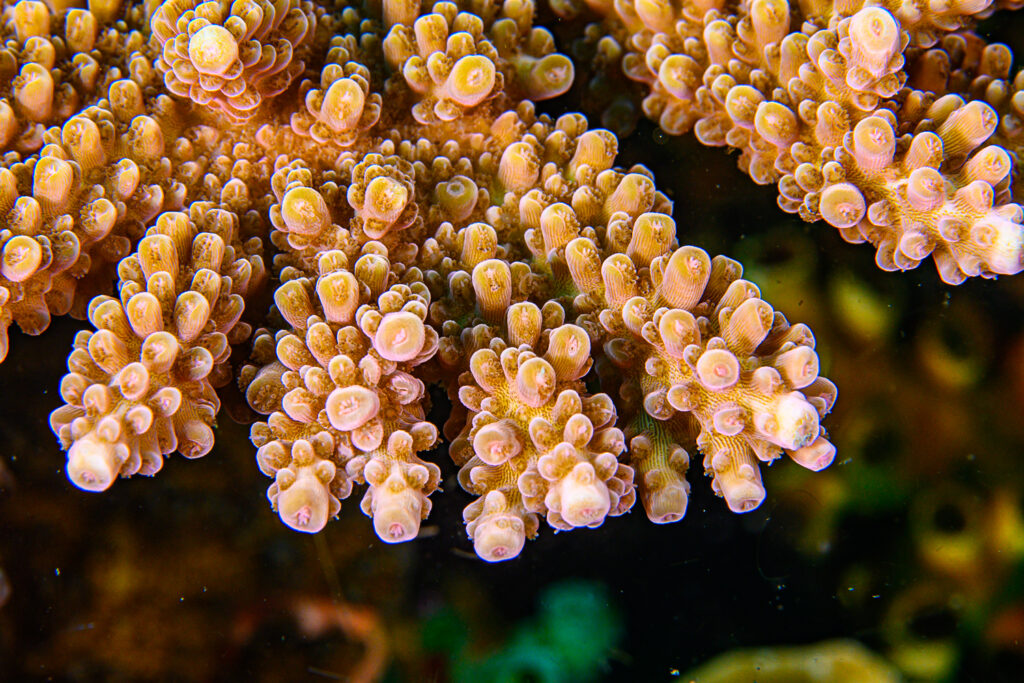
Radial corallites are large, of two different sizes, tubular, and irregular in length to rasp-like with dimidiate opening, and often touching.
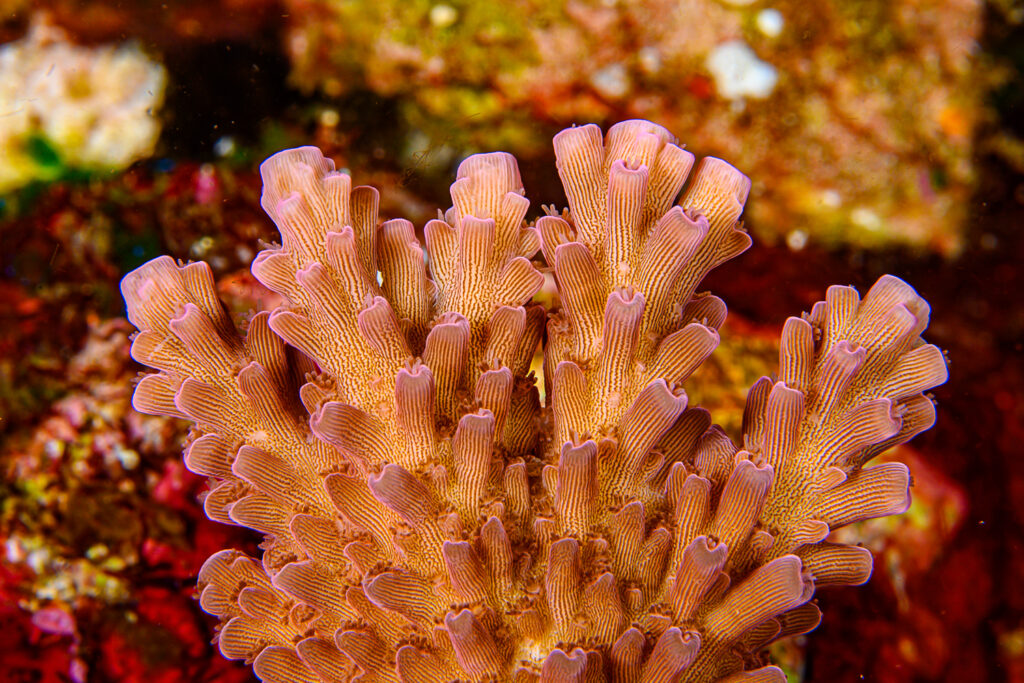
River Flow!
This is where the challenge is. This species is only found in places with high flow, sometimes also with high swell, which could be quite challenging to re-create in a reef tank situation. That said, flow pumps have greatly evolved and it’s getting easier to achieve in-tank flow that approximates what this coral would experience on the reef.
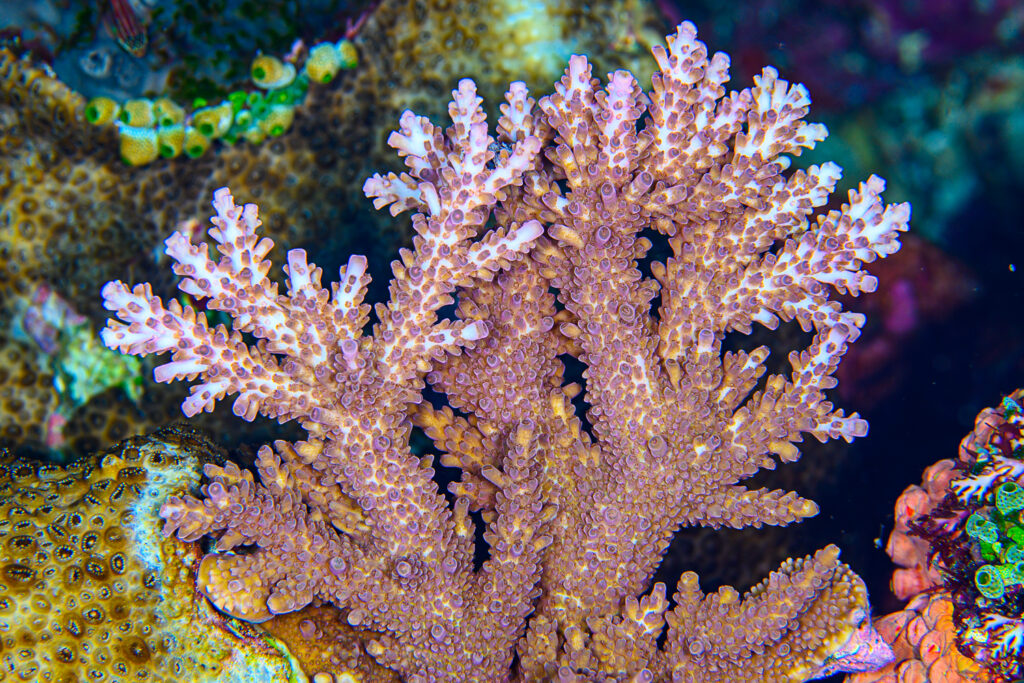
Acropora efflorescens is another species that we often find living together. They both love this extreme flow condition.
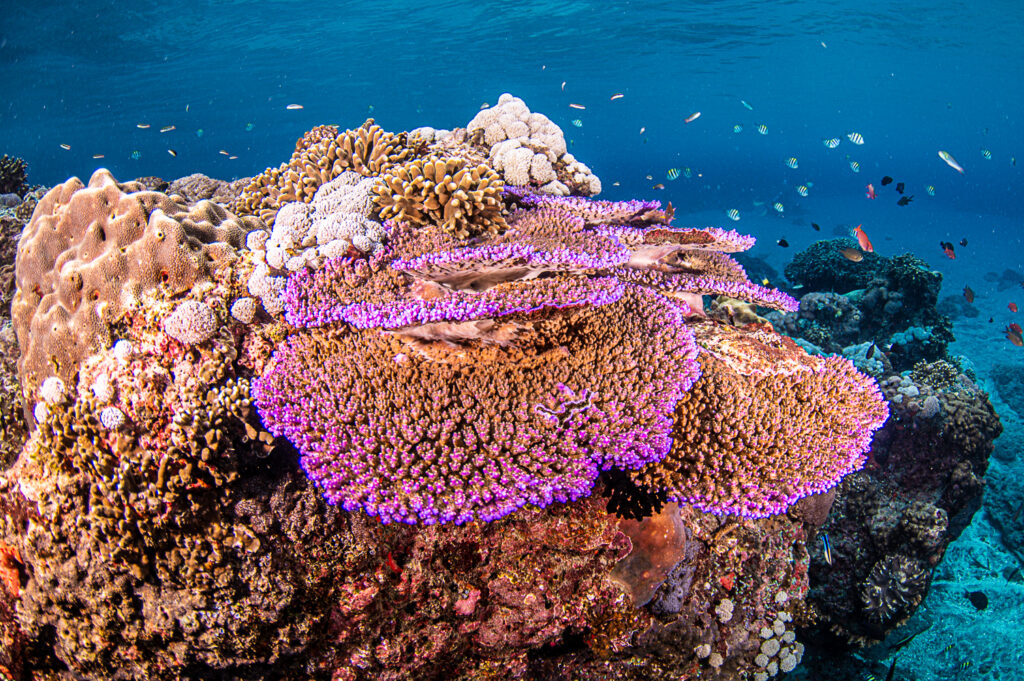
While the type locality of Acropora sukarnoi is located in the southeast of Bali, the world center of Acropora mariculture, it’s not cultured there, due to the nonexistent demand.
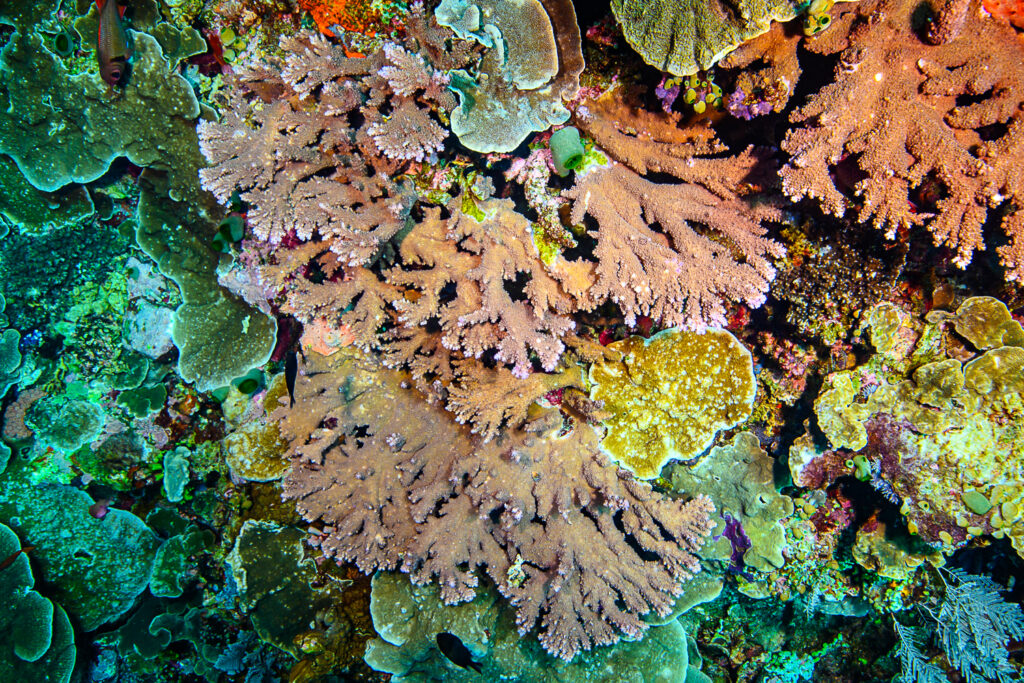
I can’t get enough of this unique species, and wish it could enter the hobby more often, so we could have some different-looking tanks. Natural coral reefs are actually very diverse, but due to the tastes of aquarists, this diversity unfortunately doesn’t translate into the reef aquarium world.





It is my hope that articles like this would excite many coral keepers around the world and change the aquarium industry at the same time. The importance of the diversity of species and the knowledge in keeping such corals in captivity pushes reef keeping to a higher level. It also brings back the challenges we used to cultivate long ago, to adapt our systems and maintain specific species in optimal conditions so we can grow. The experience in keeping different species also contributes a lot to the scientific community in many ways. Articles like this gives us an ample and serious vision for future generations. Lovely! Gotta love Acros! Thanks, Vincent!
Merci pour ces descriptifs in situ des espèces corralliennes.
Une espèce comme je les aime, simplement belle par sa forme, sans besoin d’artifice lumineux.
Beautiful coral!! I would love to add it to my system if ever available.